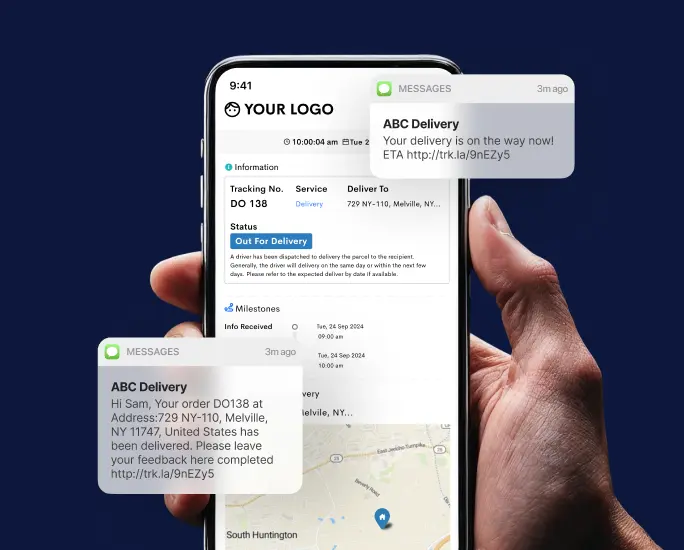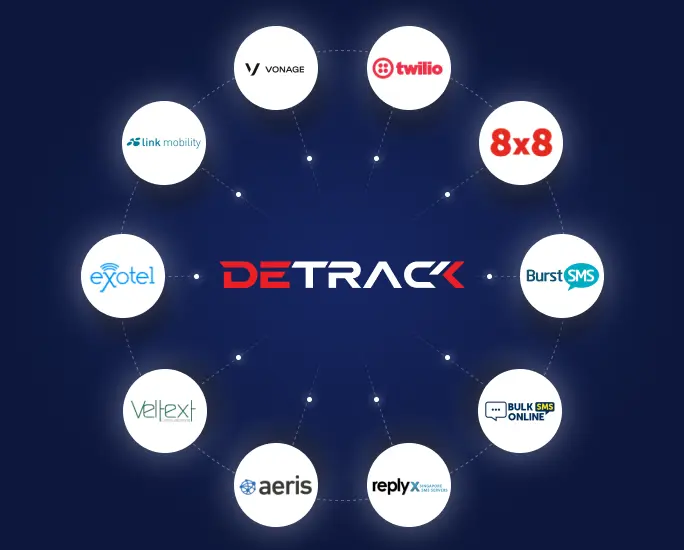As technology continues reshaping industries, businesses are constantly seeking innovative ways to streamline operations and enhance customer experiences. One such advancement that has gained considerable attention is Sign-On-Glass technology.
This cutting-edge solution has the potential to revolutionize delivery processes across various sectors.
In this blog, we delve into the transformative impact of Sign-On-Glass technology, exploring how it’s reshaping traditional delivery methods and offering new avenues for efficiency, security, and customer satisfaction.
Overview of Sign-On-Glass Technology
Sign-On-Glass technology is rapidly emerging as a game-changer in various industries, redefining how businesses handle deliveries and transactions.
This innovative solution replaces traditional paper-based processes with digital alternatives, offering various benefits ranging from enhanced efficiency and accuracy to improved customer experiences.
At its core, Sign-On-Glass technology enables customers, recipients, or clients to provide their receiver signatures directly onto a digital device, such as a smartphone, tablet, or electronic pad. This eliminates the need for physical paperwork, ink, and cumbersome manual processes.
Instead, electronic receiver signatures are captured and stored securely, revolutionizing how contracts are signed, deliveries are confirmed, and transactions are authorized.
Importance of Efficient Delivery Processes
Efficient delivery processes is a cornerstone of modern commerce, wielding power to elevate businesses in a competitive arena. Beyond just timely arrivals, streamlined deliveries foster customer satisfaction by surpassing expectations.
The advantages cascade: a strategic edge over rivals, reduced operational costs through automation, and minimized errors that could trigger disputes.
Moreover, optimized deliveries bolster operational efficiency, affording resources for strategic initiatives. With real-time tracking enhancing transparency, adaptability to market trends becomes achievable.
As businesses eye sustainability, efficient deliveries harmonize with eco-conscious practices. In a world shaped by e-commerce and rapid technological shifts, prioritizing delivery efficiency emerges as a linchpin for success.

What is Sign-On-Glass?
Definition and Functionality
Sign-On-Glass is an innovative technology that revolutionizes traditional paper-based signing processes by digitizing delivery signature forms.
This technology allows individuals to provide their electronic signatures for various purposes, from confirming deliveries and authorizing transactions to signing contracts and agreements.
The core functionality of Sign-On-Glass technology lies in its ability to capture and authenticate electronic signatures securely and efficiently. When presented with a document requiring a signature, users physically sign on the touchscreen with their finger or a stylus.
The technology then translates the signature into a digital format, utilizing specialized algorithms to ensure accuracy and authenticity. This digital signature is securely stored and can be easily integrated into electronic documents or records, replacing the need for physical signatures on paper.
How it Works: Capturing Electronic Signatures
The process of capturing electronic receiver signatures using Sign-On-Glass technology involves several steps. When a signature is required, the individual uses their fingertip or a stylus to write it directly onto the touchscreen device.
The technology employs capacitive touch or electromagnetic resonance to record the signature’s unique characteristics, such as stroke order, pressure, and velocity.
These data points are then converted into a digital representation using mathematical algorithms, resulting in a secure and verifiable electronic signature. This digital signature can be encrypted and timestamped, ensuring its integrity and legality.
Evolution of Sign-On-Glass in the Delivery Industry
Sign-On-Glass technology has undergone a significant evolution in the delivery industry. Traditionally, delivery processes relied on physical signatures, which could be time-consuming and error-prone.
With the advent of Sign-On-Glass, delivery personnel can now use mobile devices equipped with touchscreens to capture electronic signatures upon package delivery. This eliminates the need for paper receipts, reduces administrative overhead, and accelerates the confirmation process.
Additionally, real-time data synchronization enables immediate updates on delivery status, enhancing transparency for both customers and businesses.

How Sign-On-Glass Can Transform Your Delivery Process
Streamlined Proof of Delivery (POD) Workflow
With Sign-On-Glass, the cumbersome process of obtaining physical signatures for proof of delivery becomes a seamless digital interaction.
Delivery personnel equipped with smartphones or tablets can instantly capture electronic signatures from recipients, eliminating the need for paper forms and manual data entry. This accelerates the delivery process and provides an indisputable digital record of the transaction.
Real-Time Data Capture and Syncing
Sign-On-Glass technology ensure that every signature is captured and synchronized in real-time. This instant data transmission enhances visibility across the supply chain, allowing businesses and customers to track deliveries accurately.
The ability to monitor deliveries as they happen fosters transparency and reduces uncertainty about delivery status.
Reduction of Paperwork and Administrative Burden
Gone are the days of stacks of paperwork and the need to file and manage physical signatures manually.
Sign-On-Glass drastically reduces administrative burdens by digitizing the signature process. This saves time and lowers paper usage, storage, and document management costs.
Improved Accuracy and Legibility
Illegible signatures and transcription errors on paper forms can lead to confusion and disputes.
Sign-On-Glass technology eliminates this challenge by ensuring that electronic signatures are captured clearly and standardized. The digital format enhances accuracy, reducing the likelihood of errors that can arise from manual data entry.
Why Use Sign-On-Glass?
Increased Customer Satisfaction
At the heart of every successful business lies the concept of customer-centricity. Sign-On-Glass technology directly contributes to this principle by offering a modern, convenient, and efficient way for customers to interact during deliveries or transactions.
The process of electronically signing on a touchscreen device not only streamlines the experience but also resonates with the preferences of today’s tech-savvy consumers.
The ease and simplicity of signing on a digital platform enhance customer satisfaction, leaving a positive impression that can significantly impact brand loyalty and advocacy.
Enhanced Delivery Transparency and Accountability
In the realm of logistics, maintaining transparency throughout the delivery process has been a longstanding challenge. Sign-On-Glass technology addresses this challenge head-on by providing real-time confirmation of deliveries through electronic signatures.
This innovation creates an indisputable record of the transaction, eliminating uncertainties about whether a package was successfully delivered or not.
Both the delivery personnel and the recipient have immediate access to digital proof of delivery, fostering a sense of transparency and accountability that is critical in building trust between parties.
Cost Savings and Environmental Benefits
Beyond the immediate improvement in customer experience, implementing Sign-On-Glass technology leads to tangible cost savings for businesses.
The reduction in paper usage, printing costs, and administrative overhead associated with managing physical signatures directly impacts a company’s bottom line.
Furthermore, embracing Sign-On-Glass contributes to sustainability efforts by reducing paper waste and minimizing the environmental footprint. This alignment with eco-conscious practices resonates positively with consumers who value companies that prioritize sustainability.
What’s the Influence of Automating Invoicing on this Process?
Seamless Integration with Invoicing Systems
The amalgamation of Sign-On-Glass technology and automated invoicing systems creates a harmonious synergy that goes beyond the sum of its parts. Seamless integration allows for a cohesive flow from confirming delivery to generating an invoice, all within a single digital environment.
This eradicates the need for disjointed processes and manual transfers of information, resulting in a unified experience for both businesses and customers. The fluid transition from capturing a recipient’s electronic signature to promptly issuing an invoice creates a holistic journey that reduces friction and maximizes user engagement.
Accelerated Invoicing Process
Manual invoicing processes often suffer from time-consuming data entry and administrative delays. Automating invoicing, coupled with Sign-On-Glass technology, brings forth real-time efficiency.
As soon as the recipient electronically signs for the delivered goods, the system can instantaneously trigger the generation of an invoice.
This instantaneous response not only accelerates the invoicing timeline but also ensures accuracy in billing, minimizing the window for potential errors that may arise during manual data input.
Eliminating Billing Disputes
Billing discrepancies can strain relationships and consume valuable resources in dispute resolution. The synergy between Sign-On-Glass technology and automated invoicing forms a powerful antidote to such disputes.
By synchronizing the captured electronic signature with invoice generation, businesses create a binding link between the delivery confirmation and the billing process. This virtually eliminates the room for ambiguity, rendering billing disputes virtually obsolete.
The indisputable record of the recipient’s agreement with the delivery serves as an anchor for transparent and error-free invoicing.

Best Practices for Utilizing Sign-On-Glass Technology
Ensuring Compliance with Legal Requirements
While Sign-On-Glass technology offers efficiency and convenience, ensuring that your implementation aligns with legal and regulatory standards is crucial. Different industries and regions may require electronic signatures and document retention.
Collaborate with legal experts to ensure that your use of electronic signatures complies with these standards. Implement robust security measures to safeguard the integrity and authenticity of digital signatures, addressing any potential legal concerns.
Monitoring and Analyzing Performance Metrics
Leverage the data-rich environment created by Sign-On-Glass technology to monitor and analyze performance metrics. Track the time taken for deliveries to be confirmed, identify any bottlenecks in the process, and measure the accuracy of electronic signatures.
By gathering and analyzing these insights, you can continuously optimize your delivery process, enhance efficiency, and refine customer interactions. Real-time tracking also allows for quick identification and resolution of any issues that may arise.
Obtaining Feedback from Customers and Drivers
Direct feedback from both customers and delivery personnel is invaluable in refining your Sign-On-Glass implementation. Gather insights on the user experience from customers who interact with the technology during the delivery confirmation process.
Similarly, seek input from delivery drivers who utilize the technology on a daily basis. Their feedback can reveal pain points, suggestions for improvements, and any technical challenges that need to be addressed.
Enhance Delivery Processes with Sign-On-Glass Technology
In the dynamic landscape of technological innovation, Sign-On-Glass technology has ushered in a new era for deliveries and transactions. This evolution streamlines processes, enhances transparency, and boosts customer satisfaction.
By seamlessly integrating with invoicing systems, it accelerates financial operations and eradicates billing disputes. As businesses embrace this digital transformation, they unlock new efficiencies, align with sustainable practices, and position themselves at the forefront of progress.
The journey doesn’t conclude here; it’s a continuous evolution toward a more seamless and connected future, where Sign-On-Glass technology plays a pivotal role in shaping the way we engage, transact, and thrive.










